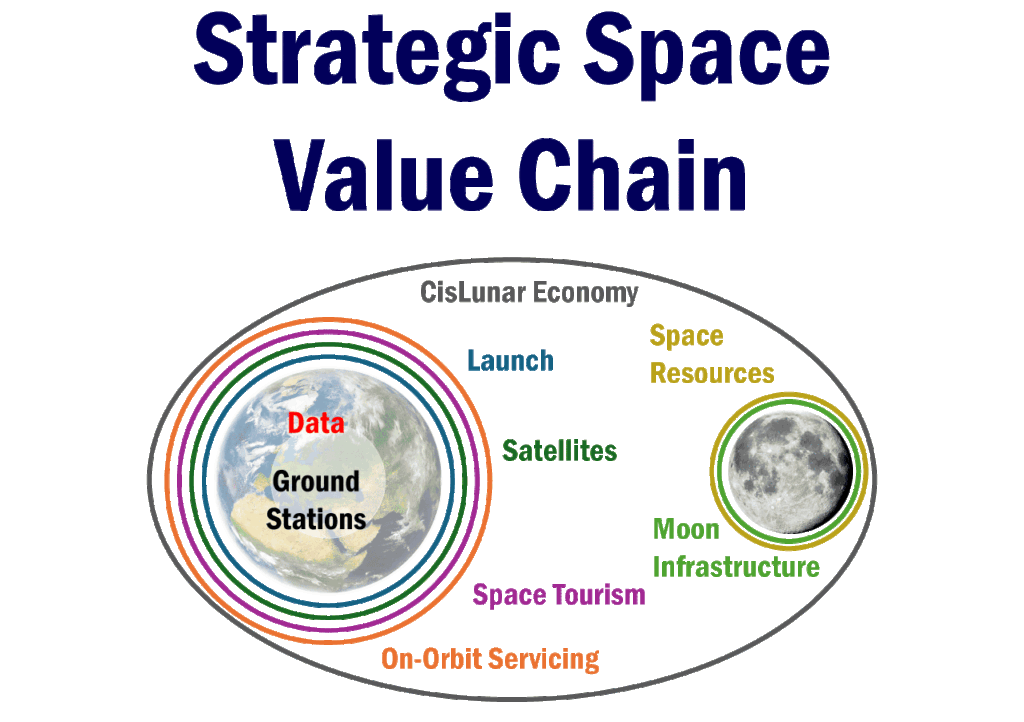European Space Ventures is integrated in the Strategic Space Value Chain and ready to participate in upcoming space commerce opportunities.
The Strategic Space Value Chain is any commercial space activity between the Earth (e.g. from Ground Stations to Low-Earth Orbit and out to Geo-synchronous Orbit) and the Moon (including orbits around the Moon and operations on the surface).
Over the last 50 years a robust cadre of space companies operating satellite fleets and launch services, have become as important as terrestrial infrastructure providers. Communication, Navigation, Earth Observation, and the servicing of these assets, are in aggregate a Strategic Space Value Chain that is established, profitable, and embedded in our daily lives and supports many global industries.
The European Space Ventures investment case for the Strategic Space Value Chain is to:
- Invest in established aerospace and space companies that have the expertise and proven technology, and,
- Building and co-managing joint-ventures that leverage ambitious entrepreneurs and accessible technology that can open up space as a commercial market.

How We Invest in the Strategic Space Value Chain
The Strategic Space Value Chain is any commercial space related business operating between Earth and CisLunar Space; this includes low-Earth-orbits, geo-synchronous orbit, and to the surface of the Moon, even the Moon’s South Pole.
The Strategic Space Value Chain is a tool that combined with our proprietary research shows geographically and spatially where the markets are, based on size, capacity for innovation, and massive opportunities.
Example includes:
Geo-synchronous orbit is home to fleets of communications satellites; they have been launched and in position for decades, their business models are well understood and the large listed space companies behind them are a low-risk space investment.
Low-Earth orbit is overtaking Geo-synchronous orbit as the strategic orbit for communications satellites. A quick glance at the buildout of Starlink and the Chinese competitor Qianfan shows how cheaper, interconnected, smaller satellites are re-shaping the world of global communication.
CisLunar, between the Earth and the Moon, is the new field, but what are the business models? Is it the command or orbits for security and observation, or is it the prized place to build terminals to fuel existing fleets of satellites, for civilia, military and commercial operations?
